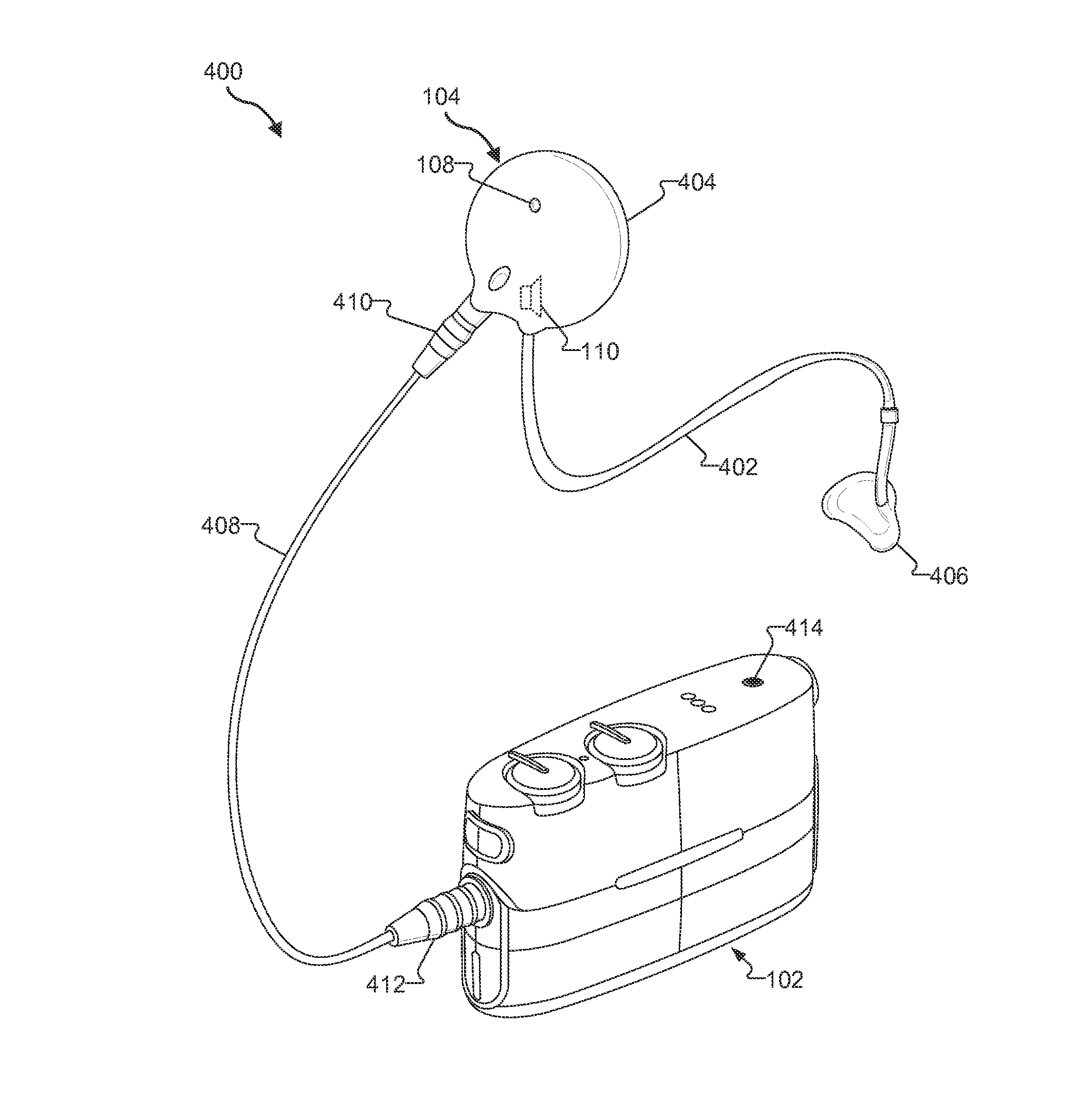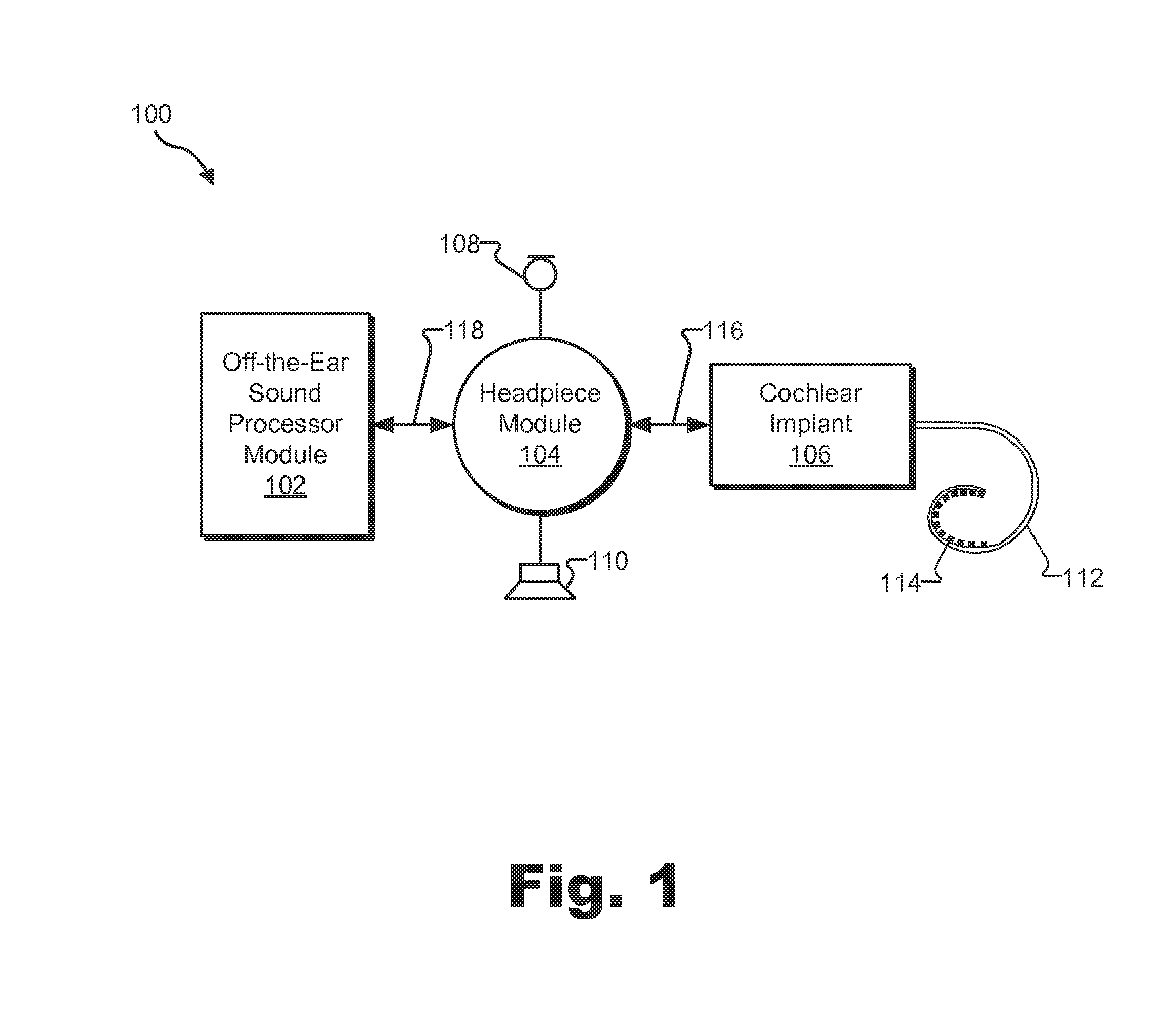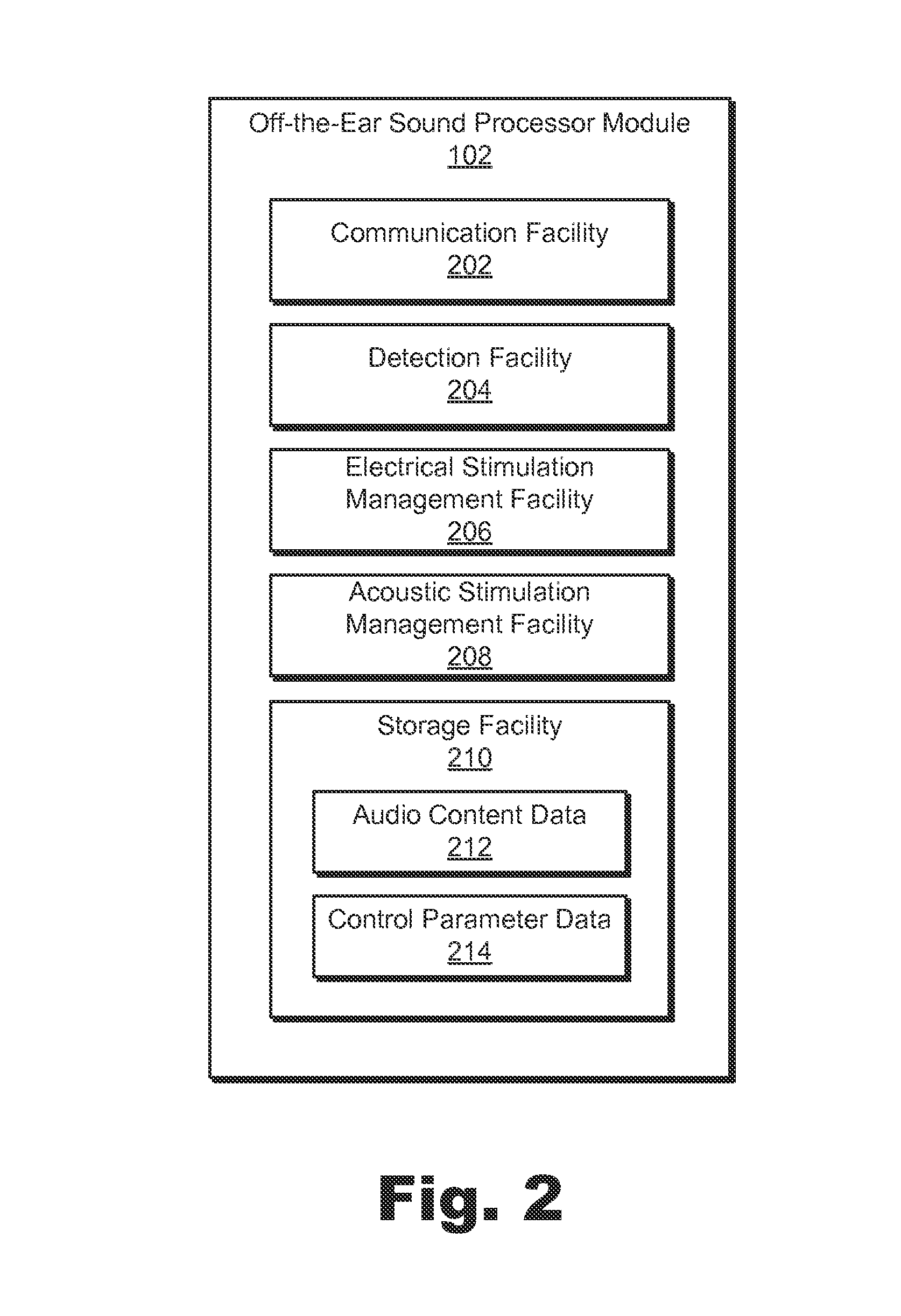Systems and methods for facilitating electro-acoustic stimulation using an off-the-ear sound processor module
a technology of sound processor and electroacoustic stimulation, which is applied in the field of system and method for facilitating electroacoustic stimulation using an off-the-ear sound processor module, can solve the problems of conductive hearing loss, impeded normal mechanical pathways for sound to reach the cochlea, and impeded sound pathways, so as to facilitate communication
- Summary
- Abstract
- Description
- Claims
- Application Information
AI Technical Summary
Benefits of technology
Problems solved by technology
Method used
Image
Examples
Embodiment Construction
[0017]Systems and methods for facilitating electro-acoustic stimulation using an off-the-ear sound processor module are described herein. As will be described below, an exemplary electro-acoustic stimulation (“EAS”) system may include 1) an off-the-ear sound processor module, 2) a headpiece module communicatively coupled directly to the off-the-ear sound processor module and comprising a housing with communication circuitry disposed therein that is configured to facilitate communication by the off-the-ear sound processor module with a cochlear implant implanted within a patient, and 3) a loudspeaker communicatively coupled directly to the headpiece module. In this configuration, the off-the-ear sound processor module may direct the cochlear implant to apply electrical stimulation (e.g., electrical stimulation representative of audio content included in a relatively high frequency band) to the patient and direct the loudspeaker to apply acoustic stimulation (e.g., acoustic stimulatio...
PUM
 Login to View More
Login to View More Abstract
Description
Claims
Application Information
 Login to View More
Login to View More - R&D
- Intellectual Property
- Life Sciences
- Materials
- Tech Scout
- Unparalleled Data Quality
- Higher Quality Content
- 60% Fewer Hallucinations
Browse by: Latest US Patents, China's latest patents, Technical Efficacy Thesaurus, Application Domain, Technology Topic, Popular Technical Reports.
© 2025 PatSnap. All rights reserved.Legal|Privacy policy|Modern Slavery Act Transparency Statement|Sitemap|About US| Contact US: help@patsnap.com



